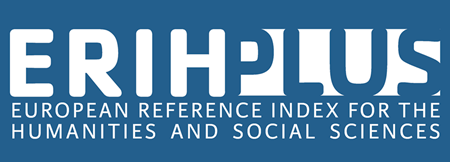LINGUOPOETIC INTERPRETATION OF THE HEART OF S. V. SHUMYTSKYI
DOI:
https://doi.org/10.32782/folium/2025.7.20Keywords:
concept, heart, metaphor, linguistic worldview, poetic worldview.Abstract
The article presents a linguopoetic analysis of the concept HEART in Stanislav Vasyliovych Shumytskyi’s poetry collection Forty Beats of the Heart. The choice of this concept is determined by its exceptional significance for the poet’s linguistic creativity, as evidenced both by its frequency of occurrence and by its inclusion in the title of the collection. The study demonstrates that the concept emerges as a multidimensional linguistic and cultural formation, functioning as a semantic center that accumulates diverse spheres of meaning: the heart as life experience, tenderness, suffering, hope, strength, spiritual unity, purpose, essence, and endurance. It was established that in Shumytskyi’s poetic discourse, the heart functions as a multilayered symbol synthesizing individual emotions and collective ideals, intertwining personal and national experience. The analysis also highlights the stylistic figures and tropes employed by the poet in modeling the various semantic dimensions of the concept, ranging from botanomorphic and anthropomorphic metaphors to contextually conditioned epithets, comparisons, and metonymies. In this way, the heart becomes not only an object of lyrical reflection but also a central artistic and semantic instrument that structures the text and ensures the integrity of the poetic discourse. Among the dominant semantic realizations, the study identifies the following: the heart as life experience, the heart as tenderness, the heart as endurance, the heart as hope, the heart as essence, the heart as purpose, the heart as spiritual unity, the heart as suffering, and the heart as vital energy and strength. The analysis allows us to conclude that the linguistic conceptualization of the heart in Shumytskyi’s poetry is simultaneously an individual authorial phenomenon and a culturally determined construct, as it reflects characteristic features of Ukrainian mentality and spirituality. Such an approach opens prospects for further research not only within the framework of studying the works of the “quiet heroes” of the Sixtiers movement but also in the broader context of examining national conceptual spheres in Ukrainian poetry of the second half of the twentieth century.
References
Голобородько, К.Ю. (2010). Ідіостиль Олександра Олеся: лінгвокогнітивна інтерпретація. Харків : Харківське історико-філологічне товариство. 527 с.
Мазепова, О. (2013). Концепт серце як ключовий концепт внутрішнього світу людини (на матеріалі перської мови). Studia linguistica,
, 269–277.
Селіванова, О.О. (2004). Нариси з української фразеології (психокогнітивний та етнокультурний аспекти). Київ-Черкаси. 275 с.
Скаб, М.В. (2008). Закономірності концептуалізації та мовної категоризації сакральної сфери. Чернівці : Рута. 560 с.
Шумицький, С.В. (1966). Сорок ударів серця. Поезії. К. : Видавництво «Прапор». 76 с.
Юркевич, П.Д. (1999). З рукописної спадщини. К. : КМ Academia; Пульсари. 332 с.












